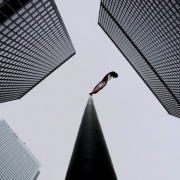Speaking from Queen’s Park on Friday afternoon, Ontario Premier Doug Ford announced a halt to all residential construction in the province. As of 11:59 p.m. on April 4, the only projects allowed to continue will be those single-family, semi-detached and townhouse properties which have secured either footing or above-grade structural permits. Renovations to residential properties that were initiated prior to April 4 will also be permitted.
While the announcement was hardly unexpected considering the surging number of COVID-19 infections in the province, it comes at one of the worst possible times for Ontario home buyers. Demand for properties, both new and old, continues to be driven by rapid population growth, while active inventory is at record lows in community after community.
“If construction projects are delayed for four or five months, maybe the market will absorb that, and maybe we won’t feel a shock,” says Bosley Real Estate’s David Fleming. “But if you’re talking every single project that was supposed to be started is now delayed six, eight months – or let’s say that it takes longer to start up again after [builders] are given the green light – I do think that in the future you could have that period where you’re expecting the volume to come onto the market – and it doesn’t – and prices go up as a result.”
The question most prospective home buyers may be turning over in their minds is whether the higher prices associated with lower supply will be overpowered by the dip in prices most are expecting in the coming months. According to PSR Brokerage’s president of pre-construction and development, Ryan Yair Rabinovich, the price drops many are hoping for may not materialize.
Resale buyers, he says, unless they’re forced to by their own financial circumstances, are unlikely to sell if home prices fall, especially those who survived the global financial crisis of only a decade ago.
“2008 and 2009 is still fresh in many real estate owners’ minds,” he says. “They realize that it wasn’t actually as bad, and it didn’t take as long to recover, as people initially thought it would take.”
For new product, the likelihood of lower prices is even less likely, as developers are under severe pressure for their projects to remain profitable.
“Ninety-five percent of developers in the GTA use construction loans from banks,” Rabinovich explains. “Banks won’t lend a single dollar toward construction if you don’t have the minimal profit margin in a project.”
While he hopes that construction projects will be allowed to fire up in eight to 12 weeks, Rabinovich says shuttered projects will still face the same scaling-up challenges they dealt with before the COVID-19 crisis, which will only add to the delays.
“It’s not something where Ford unlatches the lock on this thing, and the next day you have all your trades on site. It requires a lot of coordination and lot of time,” he says.
With new construction projects often taking anywhere between four and six years to complete, the effects of the construction halt are impossible to gauge. But one thing is certain: anyone in Ontario who complains about “all the cranes in the sky” today will be feeling their absence soon enough.









 Maziar Moini, Broker of Record - Home Leader Realty Inc.
300 Richmond St. W., #300, Toronto, ON M5V-1X2
Maziar Moini, Broker of Record - Home Leader Realty Inc.
300 Richmond St. W., #300, Toronto, ON M5V-1X2



